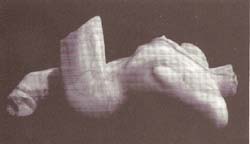
Who are you? 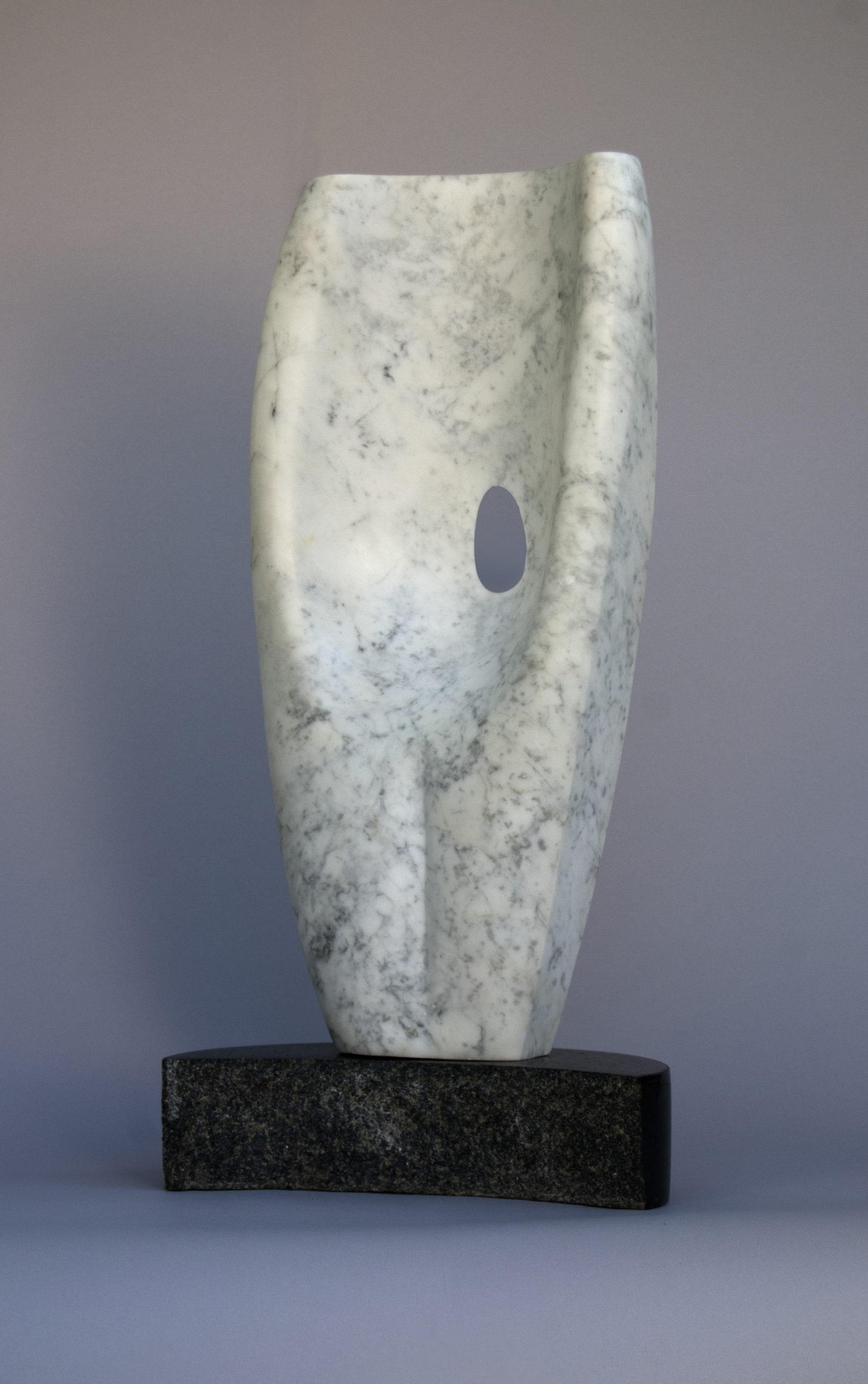
Ken Barnes, long-time member, past board member and treasurer.
What is your life history as it relates to being an artist?
I was never the kid in school that the art teacher lavished with attention. I realize now I didn’t understand the purpose of the art class was to instill creativity rather than to produce a drawing of a horse.
Why did you become an artist?
Art became a part of my life when I was dating an art aficionada. I took it as a challenge to see if I could create some art – to prove that I had both a left and right brain. I thought it would be a passing hobby, but it has taken over my life. The transition from “trying” to “dedicated” came when I was introduced to Kazutaka Uchida’s art. After seeing his work I sought out instruction and ultimately found Camp B and the NWSSA.
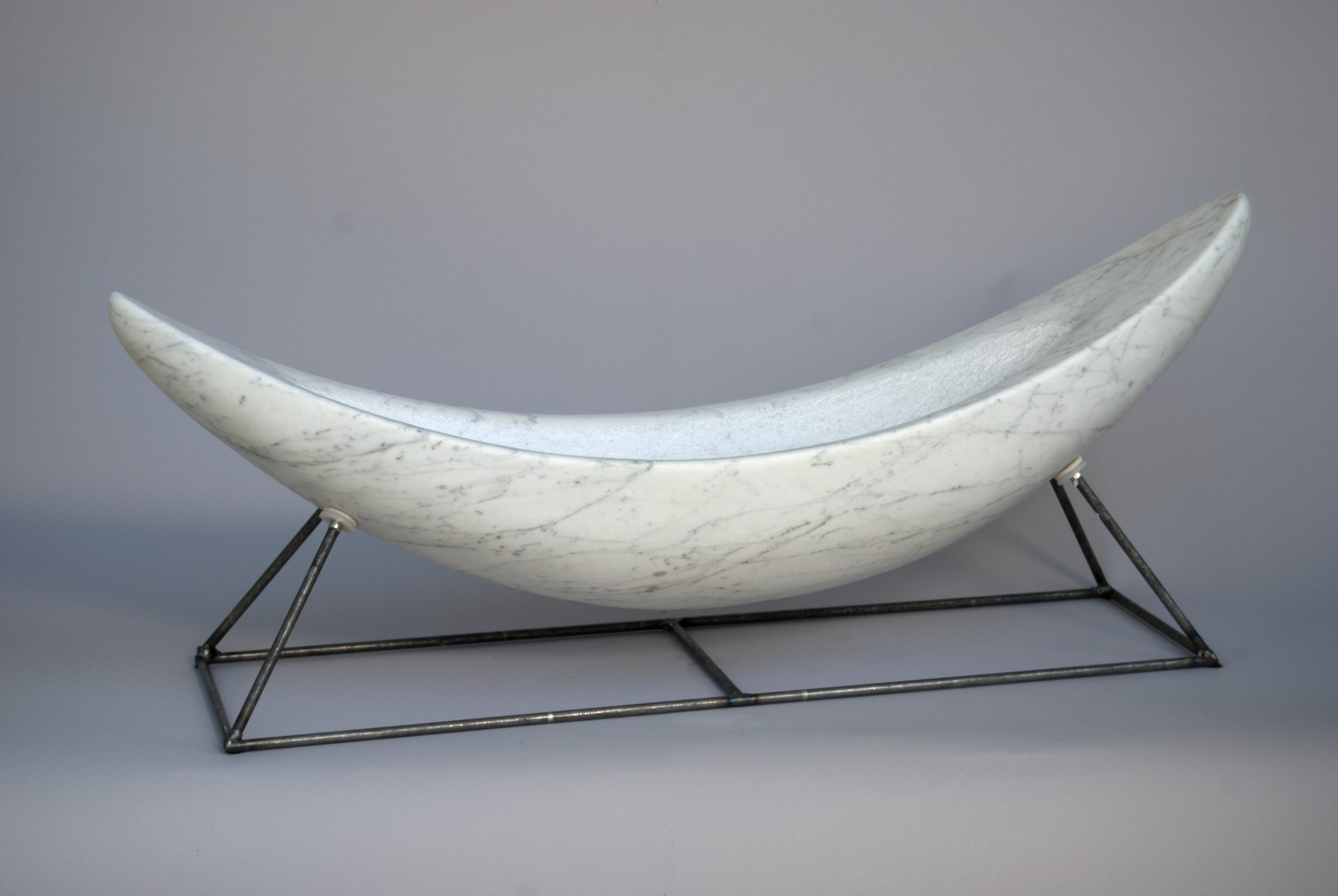 How has NWSSA influenced your work as an artist?
How has NWSSA influenced your work as an artist?
In the early years the NWSSA was a smorgasbord of ideas, tools, techniques and stone, for me. I was interested in trying every stone, tool and style. Eventually I settled on a comfortable style and the NWSSA became more of a social group.
Describe your art in your own terms – focusing on your stone carving.
My work in the past has been mostly “expressive”, to borrow a term from Rich Hestekind. Kazutaka Uchida and Isamu Noguchi have heavily influenced my work, though of late I am trending more towards Henry Moore, Barbara Hepworth and Constantine Brancusi. I would call my latest pieces abstract, and particularly biomorphic, as I pull more from recognizable forms. I am nearly done with a large outdoor piece that is highly representational.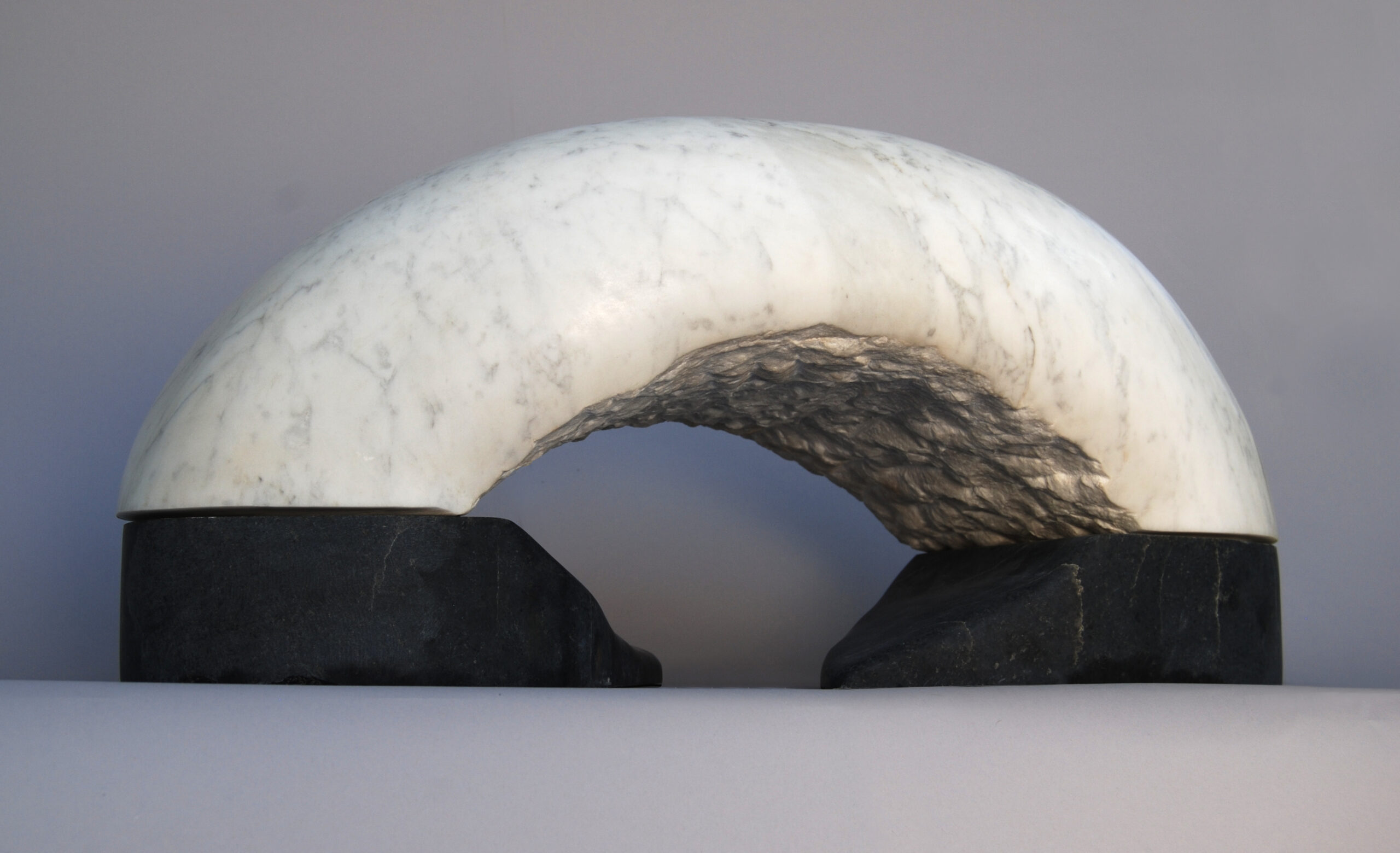
How do you get your ideas, and what is your process?
I spend a lot of time looking at images, whether they are human forms, natural objects or manmade creations. My main use of Facebook, for example, is to scroll through all the images that are posted. I am in a phase right now where I am drawing quite a bit from animal forms. I have been a beekeeper for the last couple years and have been trying to find a way to use any of the fascinating bee-made patterns in stone. I stumbled across a way to do this while I was fret cutting last week, so am looking forward to that as my next piece.
I typically develop my ideas through drawing. I am not a good draftsman – my wife can’t understand what I am thinking of by looking at my drawings, but they make sense to me. I’ll doodle around with various forms and eventually one particular presentation of a form will grab my eye. Then I’ll take that presentation of the form and redraw it dozens of times as part of a sculptural form until I am happy with the concept. The ultimate sculpture will likely have little similarity to the paper work, but the sense of movement that drew my eye on paper will prevail in the work. I moved my studio two years ago so I came to realize exactly how many stones I had acquired – it was sobering. I gave many of them to the Camp Brotherhood auction but renewed my focus on turning the rest of the pile into something interesting. Now I start my drawings with a focus on how to turn this or that particular stone into a pleasing sculpture. A recent piece is a great example of this. I had this black Belgian marble spire standing vertically in my rock pile for about 8 years. When I looked at the stone I couldn’t figure out what to do with it – the lean of the stone was difficult. When I moved my studio the stone went into a pallet box on its side. Seeing the stone lying sideways gave me the radical idea to carve a horizontal form. I had not previously thought in horizontal forms, but in less than 10 hours of chiseling I had a very pleasing horizontal form at hand. It took well more than that to figure out how to mount and present the piece, with Fluke as the result. Fluke opened my mind to the possibilities of horizontal presentation. It seems kind of silly that I had not thought in a horizontal fashion previously, but now that is added to my language in addition to vertical, suspended, round and poked through with holes. I am really curious what other form language is staring me in the face, for now unrecognized.
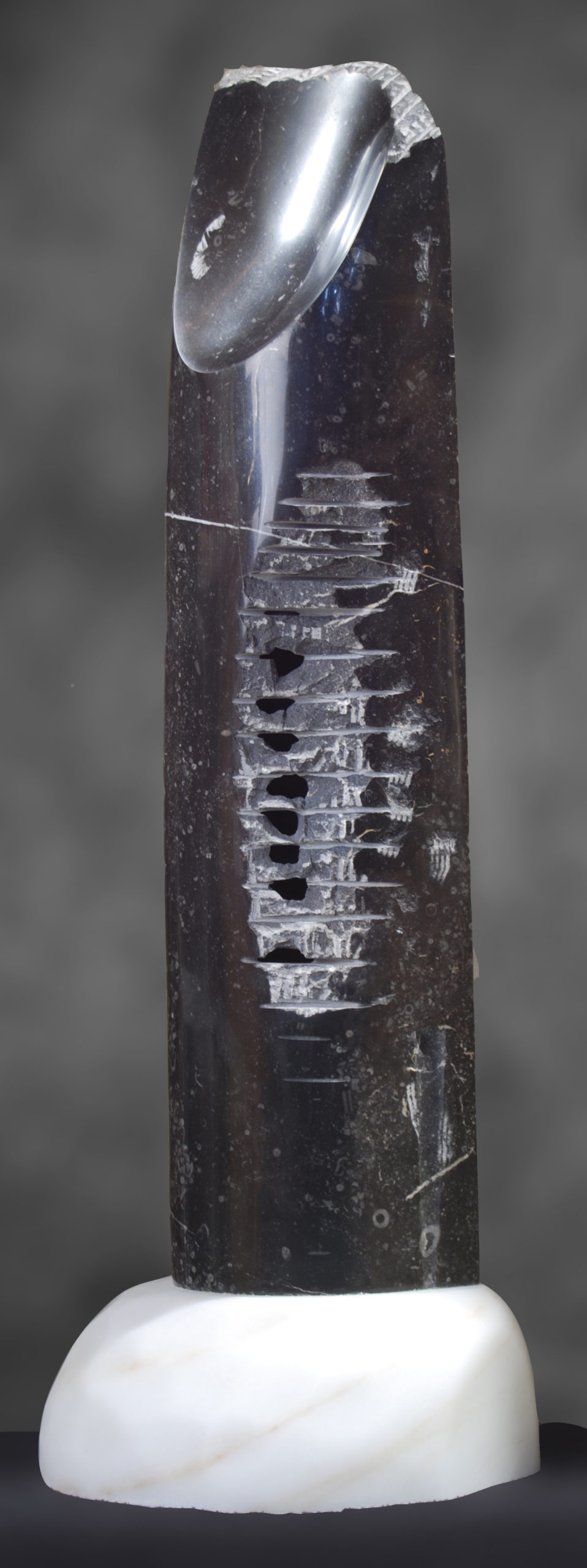 I rely heavily upon the “happy accident” to bring my work to life. There is nearly always an “oh crap” moment, where I am sure that I have ruined the work. I cut too deeply on that side or the balance isn’t what I expected or I get an unexpected break of a fret. I never recognize it at that instant, but that bad fret break always turns out to be the best part of the piece. And working with these unexpected problems becomes my favorite part of sculpting.
I rely heavily upon the “happy accident” to bring my work to life. There is nearly always an “oh crap” moment, where I am sure that I have ruined the work. I cut too deeply on that side or the balance isn’t what I expected or I get an unexpected break of a fret. I never recognize it at that instant, but that bad fret break always turns out to be the best part of the piece. And working with these unexpected problems becomes my favorite part of sculpting.
What scale or size do you work in? How much work do you create in a year? Do you show?
Human scale is my favorite size – 6 feet tall. However, I mostly work in the 100lb or less size, since it is so much easier to move around. I’ll typically have one large piece in progress along with one new smaller one and another one or two re-works – pieces that I decided after display somewhere that they need some tweaks. My annual volume is highly size-dependent. I have about 300 hours/year that I devote to my sculpture, which I would like to double over the next year or two. So a single 200-hour piece will take up a big portion of my year’s output. When I am feeling stressed for time I tend to work smaller because it gives me the feeling I am accomplishing more. When I was working on building my studio I had no extra time to create sculpture, so I didn’t worry about marketing and showing. Now that I have no other distractions I have been showing at SHIFT Cooperative in Pioneer Square. I work well to deadlines, so take advantage of the imposed show schedule to improve my productivity.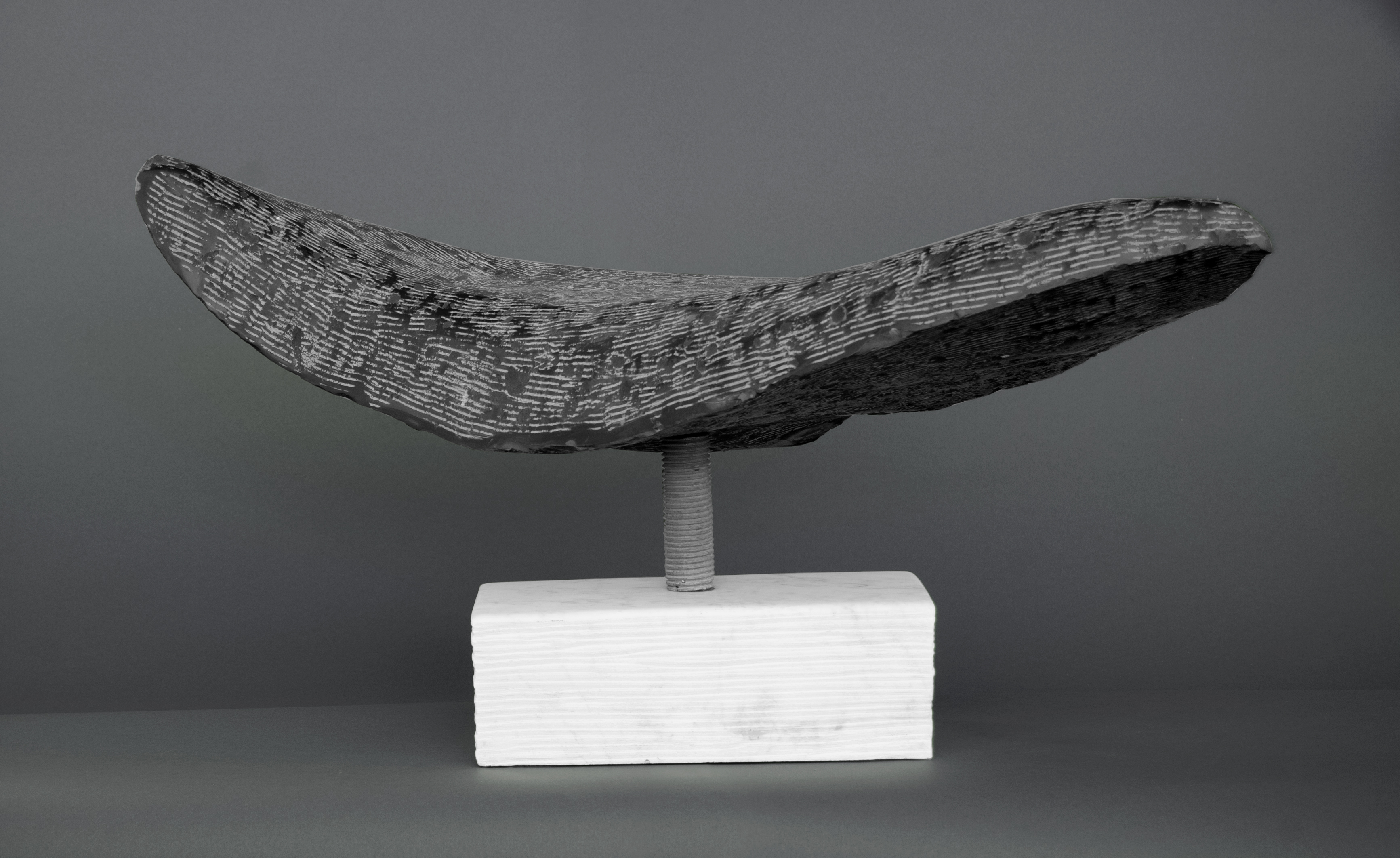
How is your work area set up? What tools do you use?
I have a good-sized studio, but I found that a functional work area is like a functional kitchen – you want everything within a step or two of the carving table. The rest of the area is essentially storage or room for secondary projects. I have a hydraulic lift table that I put on steel wheels with a track on the floor so that I can move it up and down and laterally. It can be my direct carving table or a cutting table for a big saw that I sometimes use to block out work. I rented a studio for years that had a chain-fall bridge crane. That crane so increased my safety and reduced the stress on my back and fingers that I put an electric one into my studio as the highest priority. The other work habit that I adopted 15 years ago out of necessity was wet carving. My first studio was a totally enclosed space so I had to carve wet to keep the dust down. I have stuck with that ever since. Prior studios had sloping floors due to settlement so the water easily ran away from my carving area. But I spent many hours leveling my work or carving tables and I decided I wanted level floors, with the downside that I spend many hours instead squeegeeing the floors clear of water/mud. But the consequences of improper squeegeeing are minor compared to the consequences of out-of-plumb sculptures.
 I use whatever tool I can get my hands on. The technology in your studio definitely determines the forms that come out of the studio. So I like to experiment with different tools to keep new forms available. I have many go-to tools that have been part of my studio since the early years. My core drill/stand makes any hole-cutting quite easy. I turned the drill stand upside down and mounted it from an overhead beam so that the base doesn’t get in the way of my drilling and can tilt the drill to nearly any angle. I bought an old block saw from George Pratt about 15 years ago, and use that for small base prep and some early blocking out. I bought a larger block saw from Dean at Princess Jade about 10 years ago. This is handy to block out larger stones and create larger bases. I burn through every electric angle grinder put in my hands, so I mostly use pneumatic grinders because of their durability. Over the last year I have become enamored with electric circular saws because they seem to bear up well under stone-cutting stress. I bought a couple at a pawnshop and they are still running a year later. I zip-tie water feeds to their frame and have even tied a bungee between the saw and my crane hook to lower the weight in my hands. My pneumatic water polisher remains my favorite tool of all time (after the crane). I just love the meditative process of pneumatic polishing. However, even with these power tools I still maintain a diverse chisel collection and use quite a number of them to break, bruise or shape the stone in unique ways.
I use whatever tool I can get my hands on. The technology in your studio definitely determines the forms that come out of the studio. So I like to experiment with different tools to keep new forms available. I have many go-to tools that have been part of my studio since the early years. My core drill/stand makes any hole-cutting quite easy. I turned the drill stand upside down and mounted it from an overhead beam so that the base doesn’t get in the way of my drilling and can tilt the drill to nearly any angle. I bought an old block saw from George Pratt about 15 years ago, and use that for small base prep and some early blocking out. I bought a larger block saw from Dean at Princess Jade about 10 years ago. This is handy to block out larger stones and create larger bases. I burn through every electric angle grinder put in my hands, so I mostly use pneumatic grinders because of their durability. Over the last year I have become enamored with electric circular saws because they seem to bear up well under stone-cutting stress. I bought a couple at a pawnshop and they are still running a year later. I zip-tie water feeds to their frame and have even tied a bungee between the saw and my crane hook to lower the weight in my hands. My pneumatic water polisher remains my favorite tool of all time (after the crane). I just love the meditative process of pneumatic polishing. However, even with these power tools I still maintain a diverse chisel collection and use quite a number of them to break, bruise or shape the stone in unique ways.
What obstacles and challenges have you overcome?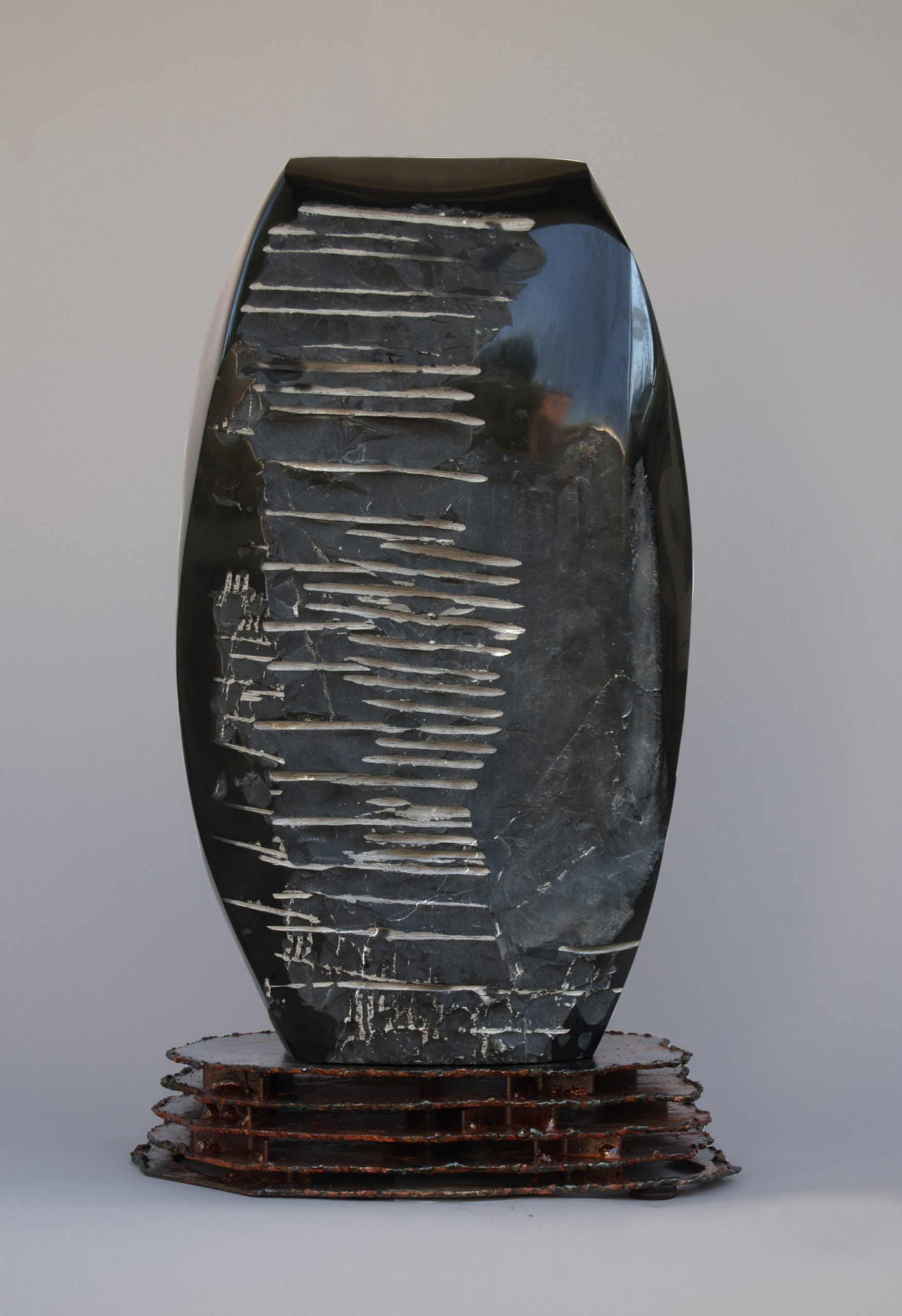
My main challenge is my fascination with tools and facilities. Sculpture has brought out some latent engineering genes. I can easily become enamored with designing and building a cool tool or studio modification and have spent far too much time on this instead of working on stone. I am now painfully aware of the art time I have burned through and have purposely been focusing my work time on just art, with the minimum on studio maintenance/improvement.
What are you looking forward to?
More time in the studio. The ideas for new work still come more quickly than I can finish pieces. And sculpture is more rewarding to me than most other activities I undertake.

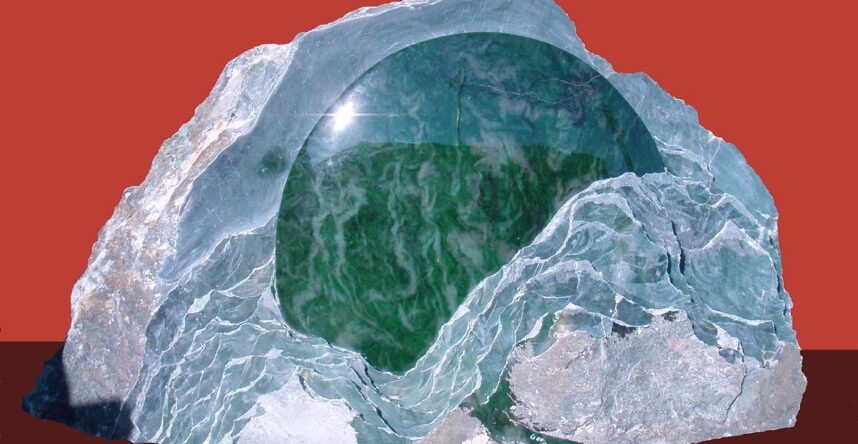
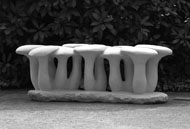



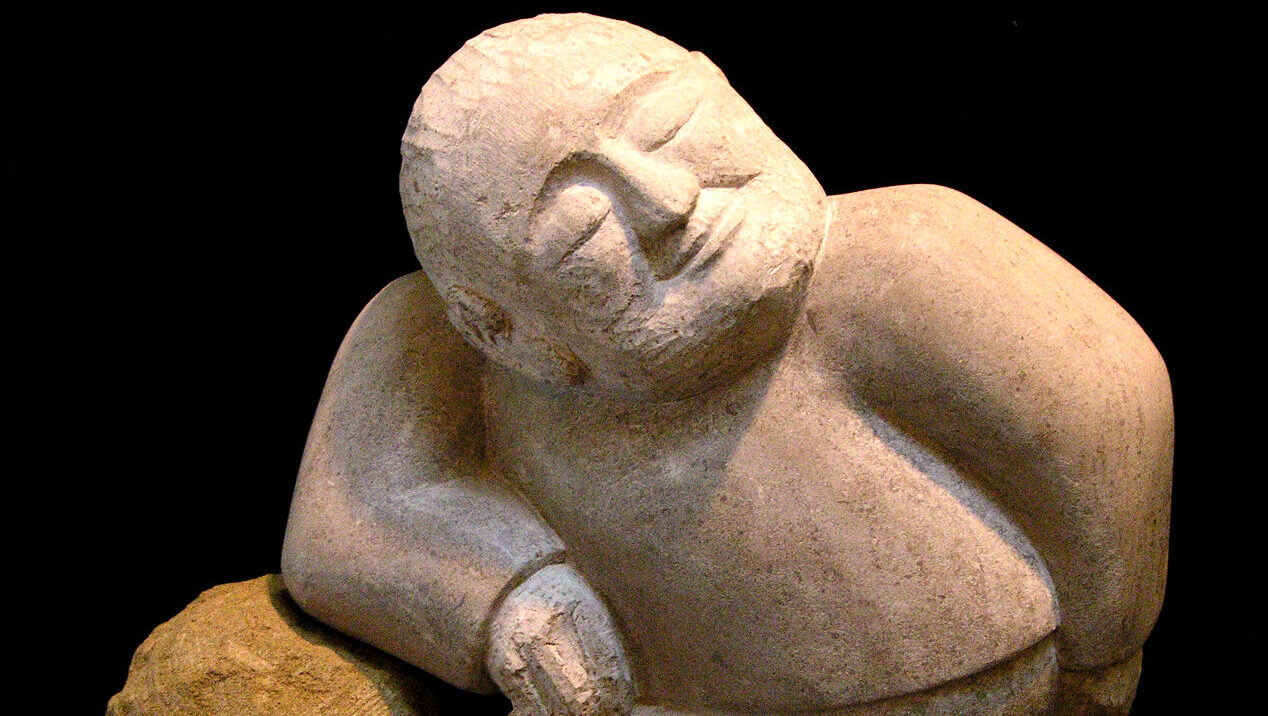

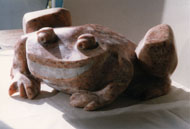
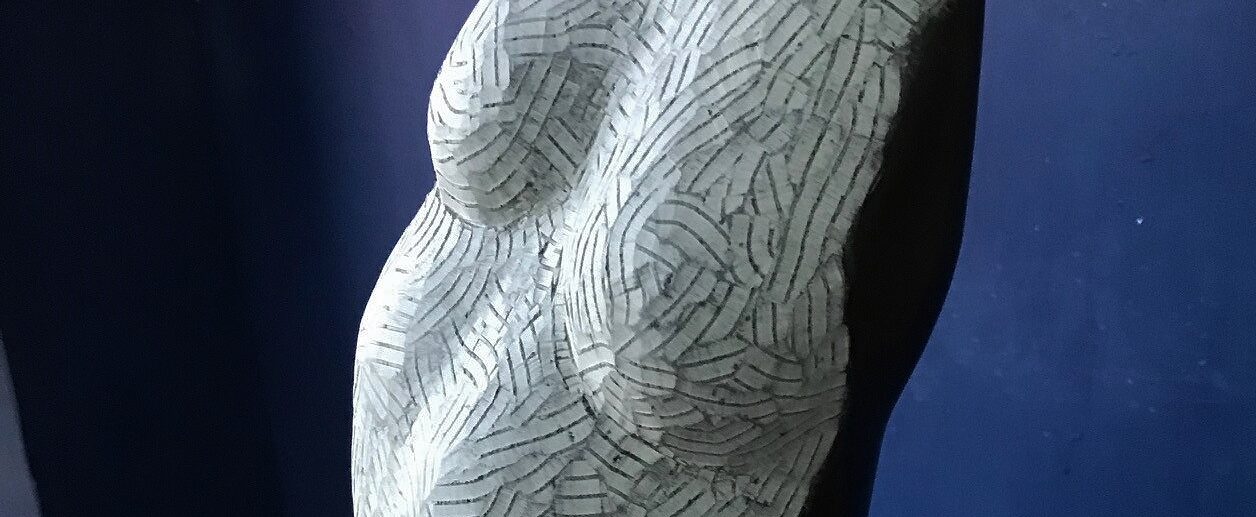

We need some kind of descriptive text here.